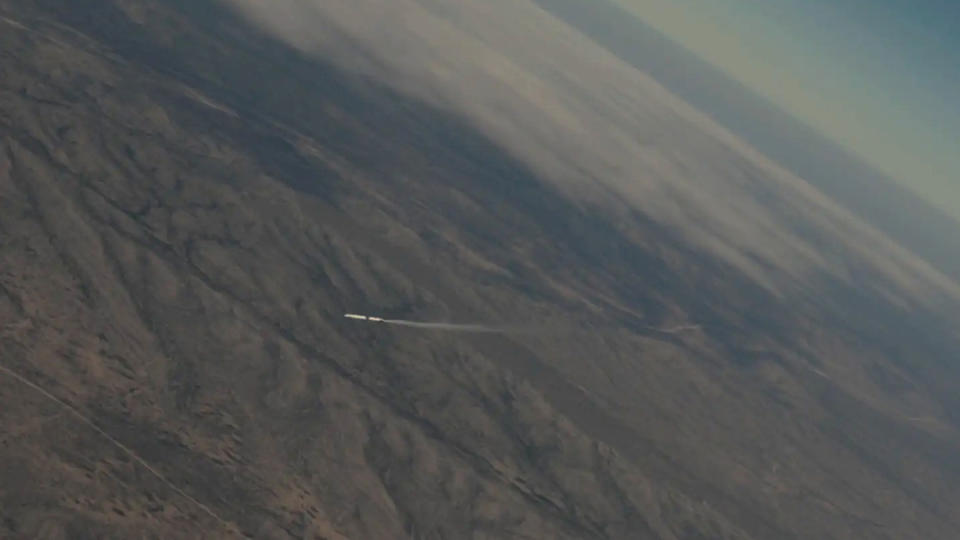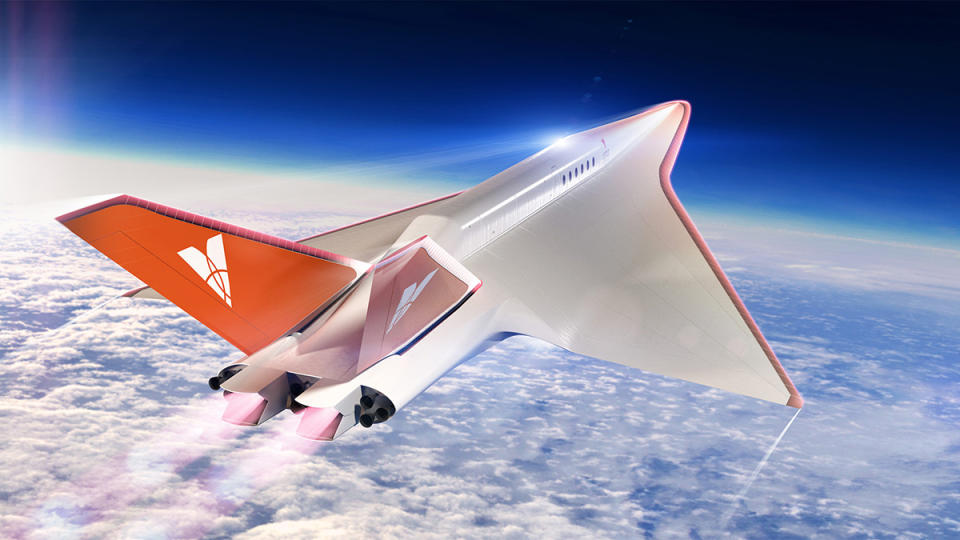Watch: This Bonkers Supersonic Drone Almost Hit the Speed of Sound on a Test Flight

Supersonic drones may sound like a far-off fantasy, but at least one new model is edging closer to reality.
Venus Aerospace’s test drone completed its first flight last week, paving the way for supersonic travel in the future.
More from Robb Report
This Bonkers Supersonic Jet Concept Could Fly at up to 1,141 MPH-With 200 Passengers
NASA Wants to Make a Supersonic Jet That's Twice as Fast as the Concorde
The prototype, which measures eight feet long and weighs 300 pounds, was powered by a hydrogen peroxide monopropellant engine for its initial jaunt in the sky. The production model will be equipped with a revolutionary Rotating Detonation Rocket Engine (RDRE), though. The robotic aircraft was dropped at an altitude of 12,000 feet and accelerated to a top speed of Mach 0.9 (691 mph) while flying for 10 miles. The aerospace startup added that the engine was running at 80 percent thrust to keep the drone cruising under Mach 1, a.k.a. the speed of sound.

The tests demonstrated flight controls, stability, telemetry, ground operations, air launch, and one leg of the RDRE propulsion system. “Using an air-launched platform and a rocket-with-wing configuration allows us to cheaply and quickly get to the minimum viable test of our RDRE as a hypersonic engine,” Venus Aerospace CTO and cofounder Andrew Duggleby said in a statement. “The team executed with professionalism and has a wealth of data to anchor and tweak for the next flight.”
Supersonic drones aren’t exactly a new concept. The United States Army Air Forces (USAAF) has been using remote-controlled supersonic jets since the early 1950s, in fact. Past aircraft have relied on a jet engine for propulsion, whereas Venus Aerospace’s modern design uses a new rocket engine. The RDRE creates 15 percent more thrust than conventional engines, according to Venus. This means the Venus drone can fly further than its competitors on less fuel.

The RDRE will also be at the heart of a hypersonic spaceplane Venus has in the pipeline. The aptly named Stargazer will take off from airports using jet engines, then switch to the rocket engine to “gently” propel itself to an altitude of 170,000 feet and a speed of Mach 9, the Texan company says. The plane will reportedly be capable of flying 5,000 miles in one hour. To put that into perspective, the craft will get you from San Francisco to Japan or Houston to London in about 60 minutes. Venus will have to navigate the complex web of regulatory and certification processes before the Stargazer takes off, though. It will face some stiff competition from other aviation companies, too.
Venus says it has been awarded contracts by several U.S. government agencies to accelerate the development of its RDRE for hypersonic and space missions. It is perhaps more likely, then, that we will see the engine first used for commercial or defense purposes.
“This is how you do hard things: one bite at a time,” adds Venus CEO and cofounder Sarah Duggleby. “Up next is RDRE flight, and ultimately hypersonic flight, proving that the RDRE is the engine that unlocks the hypersonic economy.”
Best of Robb Report
Sign up for Robb Report's Newsletter. For the latest news, follow us on Facebook, Twitter, and Instagram.

